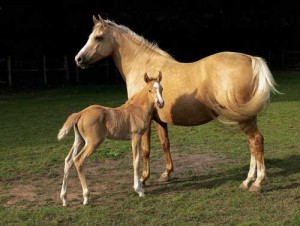The seventh animal of the Lunar Calendar, the horse, galloped in in a blaze of multi-coloured lights, green, red, yellow, at midnight on Friday, as the Wood Horse arrived with great fan-fare & thunderous ‘applause’. According to one of many legends, the cheerful, charismatic horse, despite its speed and agility, arrived seventh in a swimming race organised on the Jade Emperor’s birthday. The first 12 animals, which crossed the winning line, would receive a medal and have one of the lunar years named after it. The Emperor was just about to award the medal to the horse, when the sly snake slipped into sixth place and the horse had to settle for seventh. The Lunar Calendar is widely used in East Asia including Korea & Japan.
Those of us born in the Year of the Horse are said to be hard workers with high energy levels. Horses have a preference for working in groups, which this year recognises, is a herd animal.
 Domesticated horses are found around the world now, but were domesticated about 6,000 years ago in the dry grasslands of the Eurasian Steppes, in what is now Ukraine. They would probably have been used for transport, milk and meat. Genetic studies suggest domesticated populations had plenty of integration with wild populations and that wild mares were used to restock herds.
Domesticated horses are found around the world now, but were domesticated about 6,000 years ago in the dry grasslands of the Eurasian Steppes, in what is now Ukraine. They would probably have been used for transport, milk and meat. Genetic studies suggest domesticated populations had plenty of integration with wild populations and that wild mares were used to restock herds.
Horses are mammals & members of the Equidae family that also includes donkeys & zebras. Three species of horse survived into modern day, domesticated horse (Equus ferus caballus); the Tarpan or Eurasian wild horse (Equus ferus ferus), which became extinct in the late 19th century; and Przewalski’s horse or Mongolian wild or Takhi (Equus ferus przewalskii) native to Central Asia and the Gobi Desert of Mongolia and northern China.
BBC Online news reported, ‘Mystery of Horse Taming Solved’, May 8, 2012, the critically endangered Przewalski’s Horse is genetically close to the domesticated horse. Herds of this wild horse roam the nature reserves and national parks in Mongolia. In everyday literature, domesticated horses that have escaped the confines of man are referred to as wild horses, but in reality they should be referred to as feral horses.
The Mustangs of the United States of America and the Australian equivalent, the Brumby, are descendants of horses let loose or that strayed. Pockets of feral horses are found in Portugal and Scotland and on the barrier islands off the North American coast.
Closer to home in Sabah, the land-based Bajau people, who traditionally occupy the coastal plains around Kota Belud, about an hour’s drive north of Kota Kinabalu, are sometimes called the cowboys of the east as they raise horses and cattle. The source of the horses is a mystery. One story says the horses survived a shipwreck carrying soldiers of the Mongolian empire-builder Kublai Khan in the late 13th century. But it is more likely that they came to Borneo from the Spanish via the Philippines.
What cannot be denied is their importance. Domesticated horses have powerfully influenced man for centuries. They appear in the arts and were depicted by early man in his drawings on cave walls. They also appear in stories and songs. They were and are economically important as a source of meat, milk and transport and they continue to be used in this manner.
So this year, the Year of the Wood Horse, let us honour this remarkable animal, from the sole remaining wild horse – Przewalski’s horse, to feral horses and also domesticated horses.
Posted on February 2, 2014, Sunday in The Borneo Post:
http://www.theborneopost.com/2014/02/02/the-horse-gallops-in/#ixzz2sQfXSqZH





